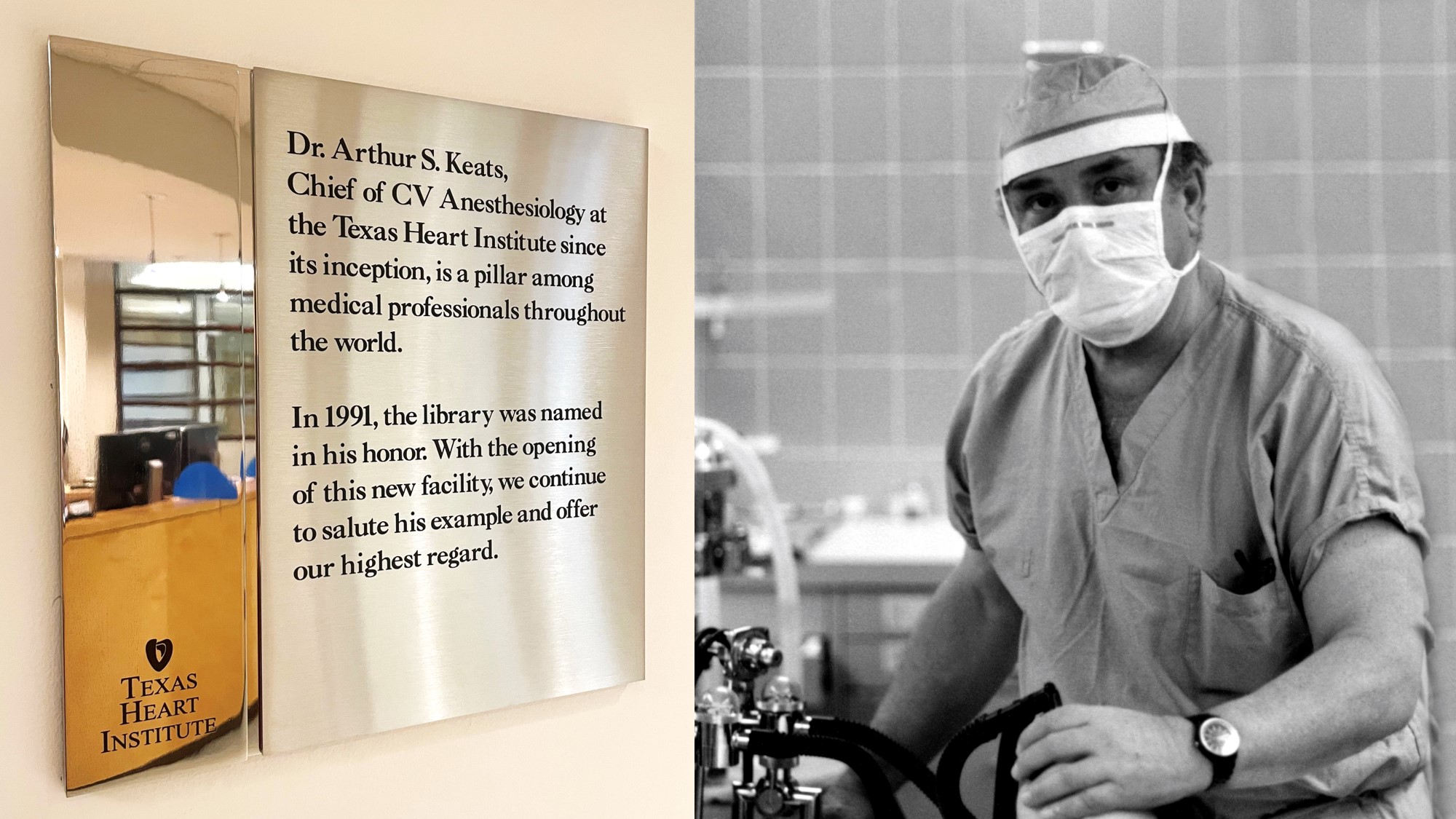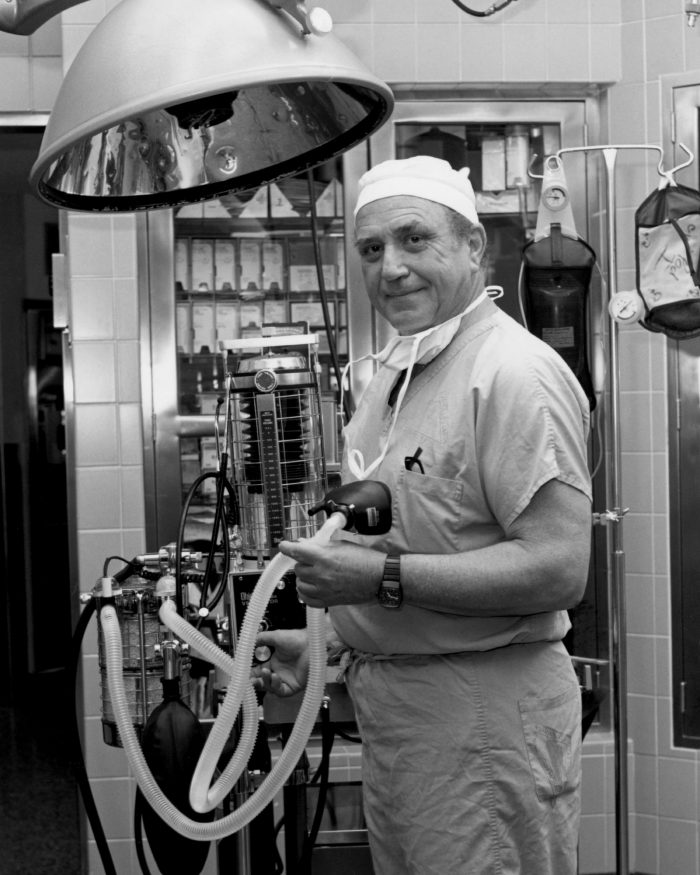Did You Know? Arthur S. Keats, Pioneer of Cardiovascular Anesthesiology

When you think of great pioneering physicians in THI’s history, cardiovascular surgeons like Denton Cooley and Bud Frazier probably come to mind. But none of THI’s surgical “firsts” could have happened without the support of anesthesiologists who understood how to help patients survive the physiological demands that cardiovascular operations placed on them.
Arthur S. Keats, MD, was one of the earliest and most prominent of these anesthesiologists. After earning his medical degree at the University of Pennsylvania and completing a residency at Massachusetts General Hospital in Boston, Keats came to Houston in 1955 to serve as Professor and Chairman of the Department of Anesthesiology at Baylor College of Medicine—a position he held for 19 years. In 1956, he was the anesthesiologist for the Texas Medical Center’s first open-heart operation.
At Dr. Cooley’s request, Keats served as the anesthesiologist in Cooley’s pediatric operations. At that time, there were no respirators small enough to use with infant patients, so Keats—much in the spirit of Cooley—developed one himself.
Of those early days, Keats said, “Almost every operation was a new experience, and every experience was relevant. Because many of the children had diseases that were essentially incurable, the risk was small. To try something was better than to do nothing. At first, we operated only on the sickest patients, but with each success, we felt confident that we could operate on other patients with similar problems.”
By the mid-1960s, as open-heart surgery became more widespread, cardiovascular anesthesiology had developed into a distinct specialty. As a leader in this new field, Keats established a research laboratory to conduct patient-oriented studies of pharmacokinetics, pharmacodynamics, and the effects of cardiopulmonary bypass on blood clotting, among other things. Because of his joint interests in clinical work and research, Keats was named editor-in-chief of the journal Anesthesiology in 1970. He also served as president of the American Board of Anesthesiology from 1975 to 1977.
In 1974, Keats left Baylor to become Chief of the Department of Cardiovascular Anesthesiology for THI, St. Luke’s Episcopal Hospital, and Texas Children’s’ Hospital, a position he held until his retirement in 2005. In 1992, he became the first anesthesiologist to win THI’s Ray C. Fish Award for Scientific Achievement.
In addition to his own research, Keats pushed others to conduct clinical research that could be used to improve patients’ postoperative outcomes. Keats held that the lack of systematic studies of postoperative results led to what he called “circus movements”—the serial adoption of different approaches to anesthesia for a given operation, with each approach being abandoned in favor of another solely on the basis of anecdotal evidence, until practitioners eventually circled around to the original approach.
In honor of his contributions to the Institute and to the field of cardiovascular anesthesiology, THI’s library was named the Arthur S. Keats Library in 1991. Although the name was changed when the library moved to the Cooley building in 2002, there is a plaque honoring him in the library, as well as a display of his collected papers.


.svg)


